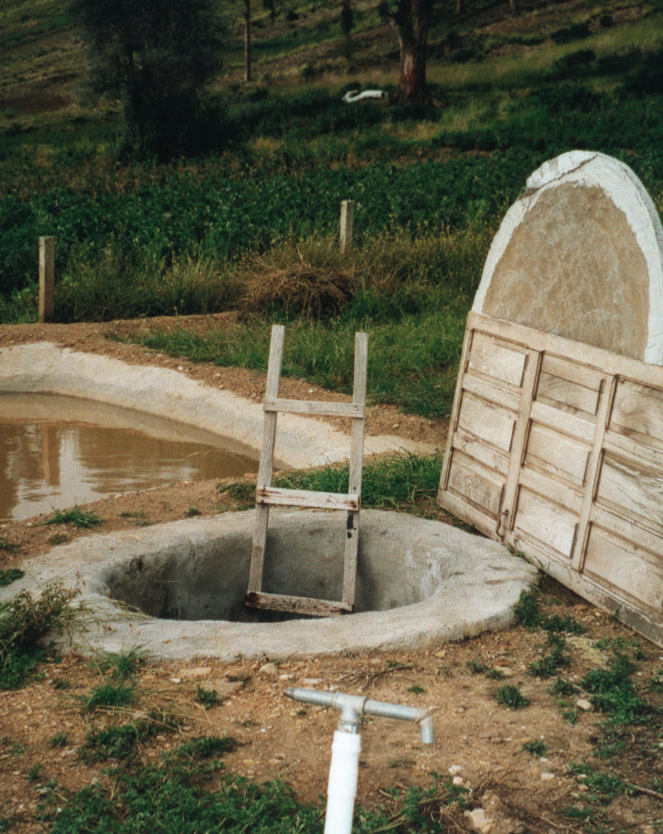Difference between revisions of "Underground tank"
(advantages and disadvantages) |
(links) |
||
| Line 21: | Line 21: | ||
== Capacity == | == Capacity == | ||
| − | + | 3500 litre each (example). | |
== Costs == | == Costs == | ||
| − | + | EMAS tanks (material): Sand and four 50 kg bags of cement for each tank. | |
| − | |||
| − | |||
| − | |||
| − | |||
| − | |||
| − | |||
| − | |||
| − | |||
| − | |||
| − | |||
| − | |||
| − | |||
| − | |||
== External links == | == External links == | ||
| − | * | + | * General [http://www.rainwaterharvesting.org www.rainwaterharvesting.org ] [http://www.unep.or.jp www.unep.or.jp ] [http://www.rainfoundation.org www.rainfoundation.org ] |
| − | + | * Recharge [http://www.practicafoundation.nl www.practicafoundation.nl ] | |
| − | * | + | * Storage [http://www.emas-international.de www.emas-international.de] |
| − | * | ||
Revision as of 22:24, 29 July 2007
Where access to groundwater is limited, rainwater harvesting in underground tanks can be an effective and low-cost solution. Water stored in the rainy season can be used in the dry season and lifted from the tank with a rope pump or with a FlexiEmas pump (see PVC pumps), which can elevate water up to 30 m.
The government, with support from organisations such as UNICEF and IRCSA (International Rainwater Catchment Systems Association) started a programme to construct one million rainwatertanks in Brazil.
Practica foundation is testing various options for low-cost storage and groundwater recharge like the "Reed cement tank" and the "Tube recharge"
| Advantages | Disadvantages |
|---|---|
| |
|
Capacity
3500 litre each (example).
Costs
EMAS tanks (material): Sand and four 50 kg bags of cement for each tank.
External links
- General www.rainwaterharvesting.org www.unep.or.jp www.rainfoundation.org
- Recharge www.practicafoundation.nl
- Storage www.emas-international.de

